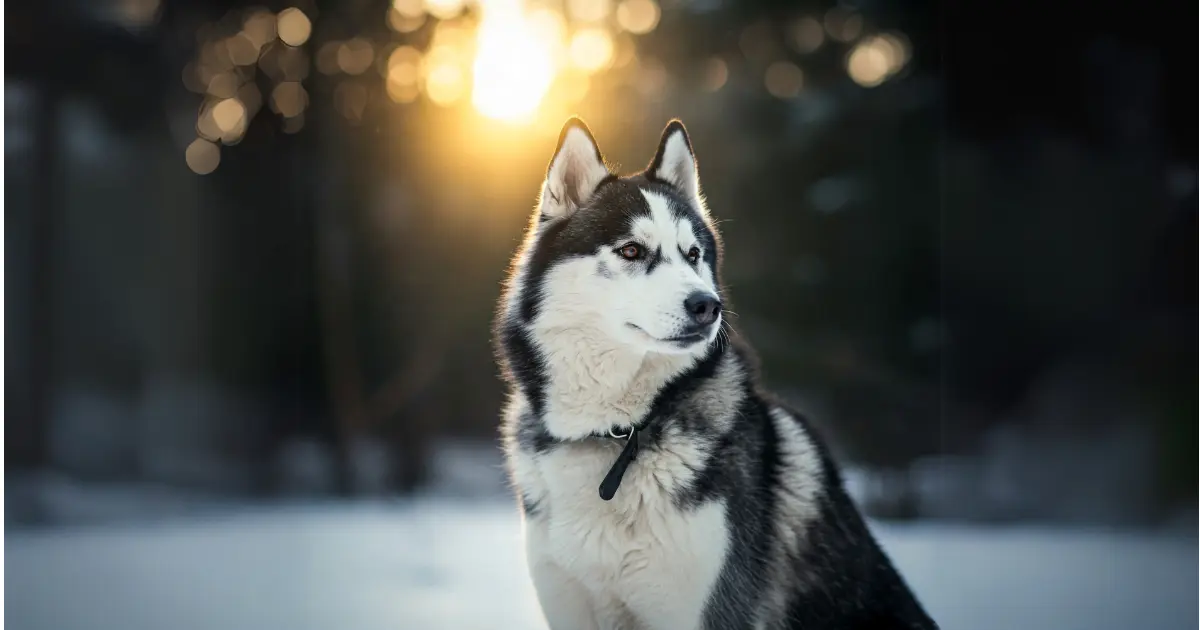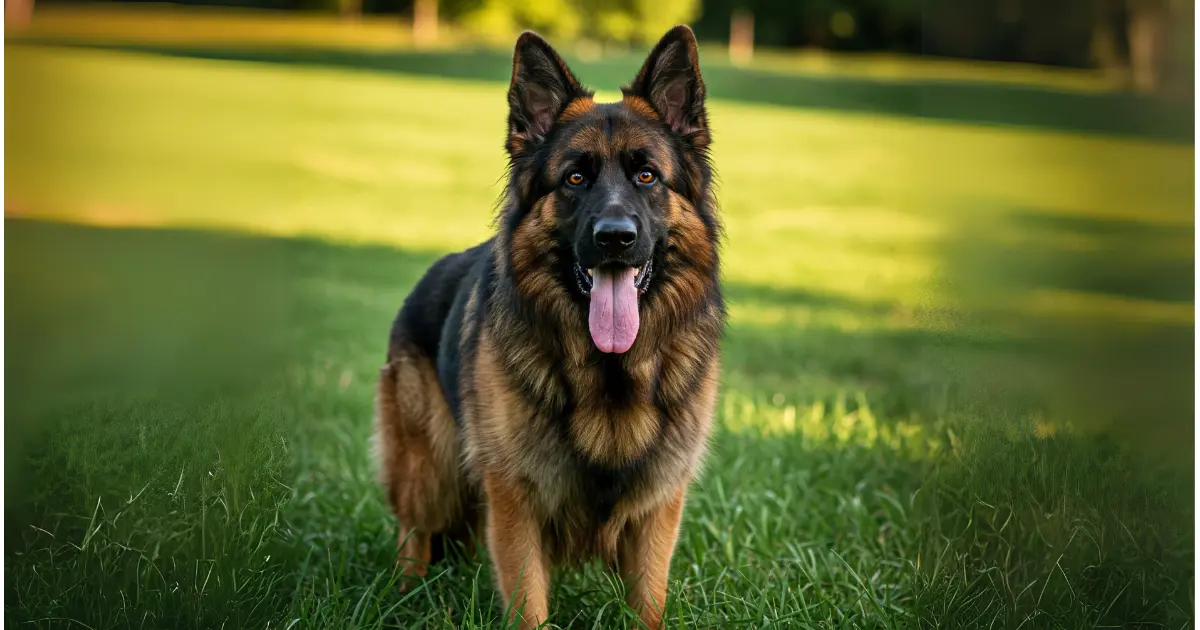What Are the Whiniest Dog Breeds?
Published: 21 Feb 2025
Whining can be adorable and frustrating, whether it’s your dog’s sweet plea for attention or an exasperating cry for something they want. If you’ve ever wondered, “Why is my dog always whining?” you’re not alone! Some dog breeds are more vocal than others, and understanding why this happens can make life with your furry friend much easier.
Table of Contents
In this guide, we’ll look at the whiniest dog breeds, why some dogs whine more than others, and, most importantly, what you can do about it. Whether you’re a first-time dog parent or a seasoned pro, this will help you manage the noise and keep you and your dog happy.
What Causes Dogs to Whine?
Before we dive into the breeds that tend to whine the most, let’s first break down why dogs whine in the first place. Spoiler alert: It’s not just to annoy us (though it might feel that way sometimes)!
Emotional Needs
Dogs are social creatures. Think of them as the ultimate “people dogs.” They love being around their humans and want to be involved in everything. When they whine, it’s often their way of saying, “Hey, I need some love right now!” Dogs that whine for attention usually feel neglected or need some comfort. If you’ve been away for a while, expect some vocalization when you return—think of it as their version of “I missed you!”
Anecdote: I remember the first time I left my dog for a few hours—when I returned, she greeted me with a symphony of whines and tail wagging. She wasn’t just happy to see me; she told me her needs were important and wanted to feel heard.
Physical Needs
Dogs also whine when they have basic physical needs that aren’t being met. Are they hungry? Thirsty? Need to go outside? They can’t tell you directly, so they resort to whining. Think of it as their way of texting you: “Hey, I’m uncomfortable. Can you help?”
Example: My Beagle, Max, will whine when it’s time for dinner. His way of saying, “Okay, I’ve waited long enough, and it’s time to eat.”
Separation Anxiety
Have you ever tried to leave your dog alone, only to have them whine and cry as soon as you walk out the door? Separation anxiety can be a big reason behind this behaviour. Certain breeds, especially those that bond closely with their owners, are prone to this anxiety when left alone. The result? Lots of whining, maybe some barking, and sometimes even destructive behavior.
Tip: If your dog whines when you leave, they might miss you more than you realize. Start with short departures and gradually increase the time to help ease them into being alone without the stress.
Breed Characteristics
Some dogs are just wired to be more vocal. It’s not their fault—they were bred that way! For example, dogs bred to alert their owners, like Beagles, or those bred to be companion animals, like Chihuahuas, are more likely to whine as a form of communication. It’s in their DNA.
The Top 5 Whiniest Dog Breeds
Let’s get into the nitty-gritty: which dog breeds will most likely keep you up with their constant whining? Every dog has its personality, but some breeds are more likely to whine because of their natural traits. Here are the top 5 breeds that tend to whine a bit more:

1. Beagle
Why They Whine: Beagles are the ultimate social dogs. Originally bred for hunting, these vocal dogs are used to making their presence known. They’re not shy about letting you know when they need attention—whether for a walk, food or just a little love.
My Beagle Story: Max, my Beagle, is the epitome of “whiny,” especially if he’s left alone for too long. I’ve learned that a good run or a long sniff-filled walk helps burn off that extra energy. He’s far less likely to start up with the whining when tired!
How to Manage Beagle Whining: Regular exercise and mental stimulation are the best ways to manage this behaviour. Ensure your Beagle gets plenty of outdoor time and puzzle toys to keep them engaged.

2. Chihuahua
Why They Whine: Don’t let their tiny size fool you—Chihuahuas have big personalities. These dogs are incredibly attached to their humans and can be prone to anxiety, especially when it comes to new environments or unfamiliar people. Whining is their go-to when they’re feeling anxious or neglected.
Example: If there’s a stranger at the door, you’ll hear a very vocal Chihuahua announcing their presence. And if you’ve been ignoring them? Get ready for some whiny protests until you give them the attention they think they deserve.
How to Manage Chihuahua Whining: Chihuahuas are sensitive to changes, so try to create a calm, consistent environment. Regular socialization with new people and places can help reduce anxiety-driven whining.

3. Dachshund
Why They Whine: Dachshunds are strong-willed and often stubborn. They whine when they want food, attention, or a nice walk around the block. Their hunting heritage also makes them more vocal than many other breeds.
My Dachshund Tale: Sophie, my Dachshund, has perfected the art of “whining” when it’s time for her walk. She doesn’t just whine; she intensifies it the longer I delay. A 10-minute walk is worth it to stop the noise!
How to control Dachshund Whining: Training Dachshunds requires patience and consistency. These little guys thrive when they have a solid routine and clear boundaries. They’re full of energy, so regular exercise and Mental Stimulation are necessary to keep them happy and stop boredom. Trust me, they’re quieter and more content when they get the right balance.

4. Jack Russell Terrier
Why They Whine: Jack Russells are super energetic and intelligent. They need constant mental stimulation, and if they don’t get it, expect some whining. They may also whine when frustrated or bored—two feelings that often go hand-in-hand for this high-energy breed.
My Jack Russell Experience: I once took my Jack Russell, Sparky, on a long hike but forgot to bring along some toys for him. By the end of the hike, I was very familiar with the sound of whining—and it was loud! Lesson learned: Jack Russells need both mental and physical outlets.
How to Manage Jack Russell Whining: Provide your Jack Russell with plenty of physical activity and mentally stimulating toys to keep them busy. Agility courses or puzzle games can keep them distracted and reduce the whining.

5. Pomeranian
Why They Whine: Pomeranians are small but mighty in the affection department. These dogs crave attention and will tell you if they’re not getting enough. Their whining can also be triggered by separation anxiety or if they feel ignored in a busy household.
Example: My friend’s Pomeranian, Bella, has been known to start a whining session if she feels neglected during a family gathering. It’s her way of demanding attention!
How to Manage Pomeranian Whining: Pomeranians thrive on attention and affection. Please ensure they get plenty of cuddles and spend quality time with you. If separation anxiety is an issue, try crate training to make a safe space for them when you’re not around.

6. Siberian Husky
Why They Whine: Siberian Huskies are natural talkers. They don’t just bark—they whine, howl, and “chat” to tell you exactly how they feel. They aren’t shy about voicing their opinions, whether bored, excited, or demanding a walk.
Example: You’ll know if a Husky hasn’t had enough exercise. They’ll whine, pace, and stare at you like saying, “Come on, let’s go!” Keeping them cooped up for too long is a guaranteed way to hear their vocal complaints.
How to Manage Husky Whining: Keeping a Husky happy means giving them plenty of physical and mental challenges. Long runs, hikes, or even sled-pulling activities keep them engaged.

7. Yorkshire Terrier
Why They Whine: Yorkshire Terriers may be small, but their personalities are anything but. They form strong attachments to their owners and don’t like being ignored. Whether they want attention, feel unsettled by a change in routine, or are unsure about a new situation, they’ll let you know with a whine.
Example: Leave a Yorkie alone for too long; you’ll hear about it when you walk through the door. They crave close interaction and prefer being near their favorite humans as much as possible.
How to Manage Yorkie Whining: Teaching them to feel secure when alone, keeping a predictable routine, and offering interactive toys can help. Regular cuddle time and reassurance also go a long way in keeping their whining to a minimum.

8. German Shepherd
Why They Whine: German Shepherds are highly intelligent and deeply connected to their routines. They don’t whine just for the sake of it—there’s always a reason. Whether they’re eager for training, uncertain, or trying to get your attention, whining is their way of communicating.
Example: If a German Shepherd is used to a structured training session every day and it gets delayed, expect some whining. They thrive on consistency and don’t like when things feel out of order.
How to Manage German Shepherd Whining: Regular training, task engagement, and reward reinforcement of calm behavior can help minimize unnecessary noise.

9. French Bulldog
Why They Whine: French Bulldogs form deep bonds with their owners and don’t enjoy being left out. Whether they’re craving attention, feeling lonely, or wanting to be part of the action, whining is their way of making their feelings known.
Example: If a French Bulldog notices their owner in another room, they might start whining to remind them they’d rather be together. They thrive on companionship and dislike being ignored.
How to Manage French Bulldog Whining: Teaching them to enjoy independent play, rewarding calm behavior, and creating a predictable routine can help reduce excessive whining. Giving them plenty of love while encouraging self-soothing habits makes a big difference.

10. Border Collie
Why They Whine: Border Collies are highly energetic and mentally active. Whining may occur when they lack sufficient exercise or mental challenges.
Example: A Border Collie without a daily task may begin whining as an outlet for unspent energy.
How to Manage Border Collie Whining: Providing structured activities such as agility training, interactive problem-solving games, and herding exercises helps maintain balance and reduces excessive vocalization.
Why Do Some Dogs Whine More Than Others?
So, why do some dogs whine more than others? The answer lies in a combination of temperament, training, and socialization.
Temperament
Some breeds are more vocal than others. For example, Beagles and Chihuahuas are bred to communicate frequently, so they’ll often vocalize to let you know what they need.
Training
Dogs that haven’t been trained to control their vocalizations may develop a habit of whining. They’ll continue the behaviour if they’re consistently rewarded for their whining. Make sure to reinforce calm behavior rather than giving in to the whines.
Socialization
Lack of socialization can also lead to more anxiety-driven whining. If your dog wasn’t exposed to different environments or people as a puppy, they might whine when uncertain about a situation. Getting your dog used to new people and places early on can help reduce this behavior.
How to Handle a Whiny Dog
Dealing with a whiny dog can be tiring, but don’t worry—it’s not all bad! Here are some easy, helpful tips that can make a huge difference in managing the whining:
1. Ensure Consistent Physical Activity
Dogs with a lot of energy tend to whine when they’re playful. Regular exercise reduces whining and can increase your dog’s lifespan, as seen in longest-living dog breeds. Trust me, I’ve found that taking them for an energetic walk or playing fetch outside does wonders. When they’ve burned off some energy, they’re much more relaxed—and quieter, too! Seriously, a tired dog is much quieter, and you’ll be much happier when they’ve had their fill of activity!
Pro Tip: Take your Jack Russell for a Speedy walk or play a game of fetch with your Beagle. The extra exercise will help them sleep better and whine less.
2. Use Positive Reinforcement
Reward your dog when they stop whining with a treat or praise. I’ve noticed that the more I praise my dog for being quiet, the more she understands that calm behavior means good things. It’s amazing how quickly they catch on!
3. Create a Calm Environment
A quiet spot can soothe an anxious dog. When I give my dog a cozy spot, like her favorite bed or crate, I’ve noticed that she feels more relaxed and doesn’t whine as much. Calming products, like pheromone diffusers, work wonders too! They help calm my dog down.
4. Teach Quiet Commands
Teaching your dog a simple “quiet” command can work wonders. Whenever they stop whining, reward them with praise or a treat. It’s all about rewarding quiet behavior; soon enough, they’ll get the hang of it!
Conclusion
Whining is a natural way for dogs to communicate, but it doesn’t have to be a constant source of frustration. You can reduce whining in your dog by understanding the reasons behind their vocalizations and taking proactive steps like providing exercise, using positive reinforcement, and ensuring they feel secure.
If you’re still curious about understanding your dog’s behavior more deeply and improving your communication with them, the American Kennel Club offers additional insights on interpreting dog behavior.
Does your dog whine a lot? What have you tried to reduce it? Share your experiences in the comments—I’d love to hear your tips!
FAQ
Can whining indicate a health issue?
Yes, sudden or persistent whining without a clear reason may indicate pain, discomfort, or illness. A veterinary checkup can help determine if there’s an underlying medical cause.
Do all puppies whine, or is it breed-specific?
Most puppies whine as part of their early communication, regardless of breed. However, some breeds are naturally more vocal as they mature.
Can changing my dog’s routine reduce whining?
Yes, a structured daily routine helps reduce uncertainty and excessive whining. Dogs adapt better when they know what to expect.
Does a lack of training cause whining?
Lack of training can contribute to unnecessary whining, as dogs learn that vocalizing gets attention. Teaching commands and reinforcing quiet behavior reduces the habit.
Do certain sounds make dogs whine?
Yes, some dogs react to specific sounds like sirens, alarms, or even musical notes. It’s their way of responding to noises that either excite, confuse, or slightly unsettle them.
Does living in an apartment make a dog whine more?
Limited space and reduced outdoor time can increase whining in active breeds. Regular walks and interactive play can prevent restlessness.
Can neutering or spaying affect whining behavior?
It may reduce whining related to mating behaviors but won’t change attention-seeking or anxiety-driven whining. Behavioral training is still necessary.
Will ignoring my dog’s whining make it stop?
Ignoring attention-seeking whining can work only if the dog’s essential needs are met. Reinforcing calm behavior alongside ignoring unnecessary whining is more effective.
Can nighttime whining be prevented?
Providing a comfortable sleeping area, a pre-bedtime routine, and avoiding late feedings or excitement before bed can reduce whining at night.

- Be Respectful
- Stay Relevant
- Stay Positive
- True Feedback
- Encourage Discussion
- Avoid Spamming
- No Fake News
- Don't Copy-Paste
- No Personal Attacks



- Be Respectful
- Stay Relevant
- Stay Positive
- True Feedback
- Encourage Discussion
- Avoid Spamming
- No Fake News
- Don't Copy-Paste
- No Personal Attacks





